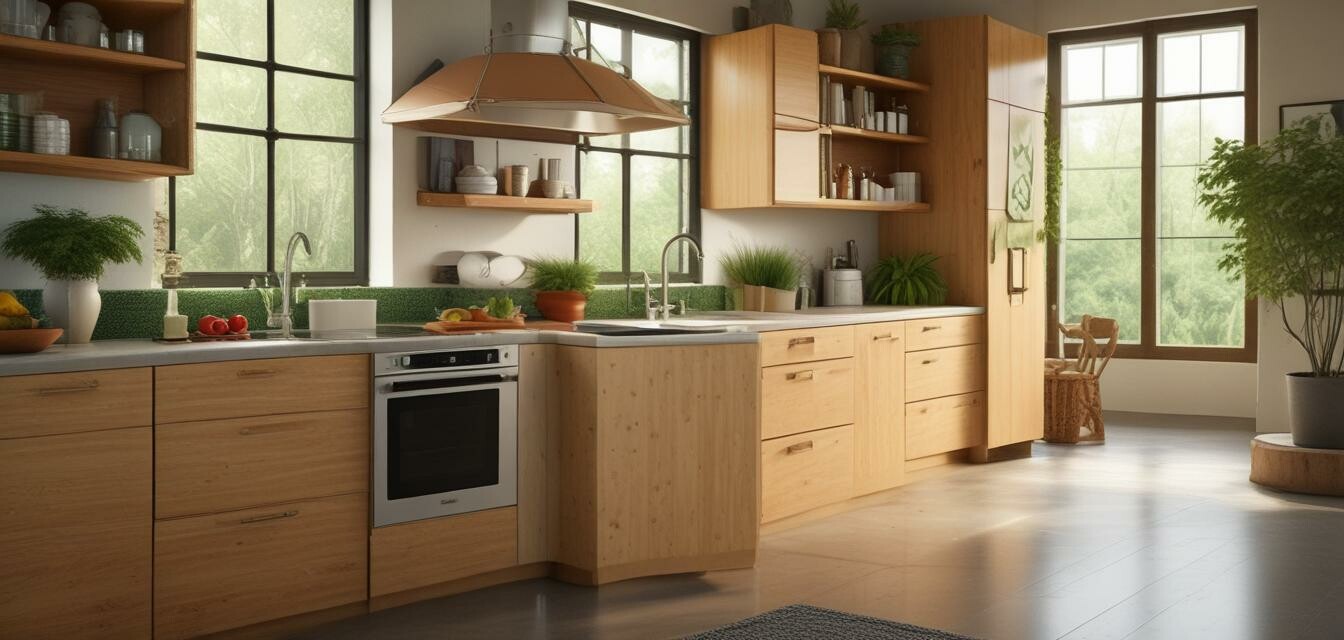
Sustainability Trends Shaping Kitchen Design
Key Takeaways
- Sustainable materials like bamboo and recycled glass are gaining popularity in kitchen designs.
- Energy-efficient appliances are essential for minimizing environmental impact.
- Innovative storage solutions contribute to a clutter-free and eco-friendly kitchen space.
- Biodegradable tools are becoming a common choice for conscious consumers.
- Design trends emphasize natural aesthetics, harmonizing with eco-friendly concepts.
The kitchen is often considered the heart of the home, serving as a gathering place for family and friends. As awareness around environmental sustainability grows, so does the desire for kitchens that reflect eco-friendly values. Today's kitchen designs focus not only on aesthetics and functionality but also on reducing environmental impact.
Emerging Materials in Kitchen Design
Innovations in materials are revolutionizing kitchen designs. Eco-conscious homeowners are increasingly drawn to sustainable materials that are both functional and beautiful. Below are some of the most popular options:
| Material | Description | Eco-Friendly Benefits |
|---|---|---|
| Bamboo | A fast-growing grass that's used for cabinets and countertops. | Renewable, biodegradable, and durable. |
| Recycled Glass | Used for countertops and tiles, made from post-consumer glass. | Reduces waste, available in many colors. |
| Reclaimed Wood | Wood sourced from old buildings or furniture, preserving history. | Reduces deforestation and enhances character. |
| Cork | A natural insulation material used for flooring. | Harvested sustainably from cork oak trees. |
| Bamboo Fiber | Used in kitchen textiles and utensils, offering a soft touch. | Biodegradable and compostable. |
Energy-Efficient Appliances
As kitchen design trends evolve, energy-efficient appliances play a pivotal role. Sustainable cooking involves using appliances that consume less energy while maintaining high performance. Important features to consider include:
- Energy Star Certification: Look for appliances that meet Energy Star standards to reduce energy use.
- Smart Technology: Appliances that can be controlled remotely can optimize energy consumption.
- Water Efficiency: Appliances designed to reduce water usage help conserve this vital resource.
For more insights on energy-efficient options, check out our guide on energy-efficient appliances.
Innovative Storage Solutions
Innovation in storage solutions is also a significant trend in sustainable kitchen design. Smart storage options help keep kitchens organized while minimizing clutter. Some popular concepts include:
- Vertical Storage: Utilizing vertical space with hanging shelves and wall-mounted racks.
- Modular Cabinets: Flexible cabinet systems that adapt to varying needs.
- Eco-Friendly Containers: Choosing storage containers made from glass or recycled materials.
To explore various eco-friendly storage options, visit our page on eco-friendly storage solutions.
Biodegradable Kitchen Tools
Another trend within the sustainability spectrum is the rise of biodegradable kitchen tools. These products are designed to minimize waste and support an eco-friendly lifestyle. Here are some examples:
| Tool Type | Description | Benefits |
|---|---|---|
| Compostable Utensils | Utensils made from plant materials that decompose. | Reduces plastic waste in landfills. |
| Natural Fiber Cloths | Cloths made from cotton or bamboo fibers. | Biodegradable and reusable. |
| Biodegradable Bags | Bags designed for food storage that break down over time. | Environmentally friendly alternative to plastic bags. |
For more on these innovative options, visit our section on compostable kitchen tools.
The Natural Aesthetic
As kitchens evolve towards sustainability, many designs incorporate a natural aesthetic. This involves using a color palette inspired by nature, along with organic shapes and materials. Key elements include:
- Earthy tones like green, brown, and beige.
- Naturally finished wood surfaces that showcase unique grain patterns.
- Incorporation of indoor plants to enhance air quality and beauty.
Conclusion
Staying ahead of the sustainability curve is essential for modern kitchen design. Embracing eco-friendly materials, energy-efficient appliances, innovative storage, and embracing natural aesthetics creates a beautiful, sustainable kitchen. Each trend not only contributes to an environmentally conscious lifestyle but also enhances the overall appeal of your home.
Pros
- Reduces environmental impact.
- Enhances home value with appealing designs.
- Promotes a healthier lifestyle with less plastic.
- Increases energy efficiency and lowers utility bills.
Cons
- Potentially higher upfront costs for sustainable materials.
- Limited options compared to traditional products.
- Need for regular maintenance to preserve sustainability benefits.


